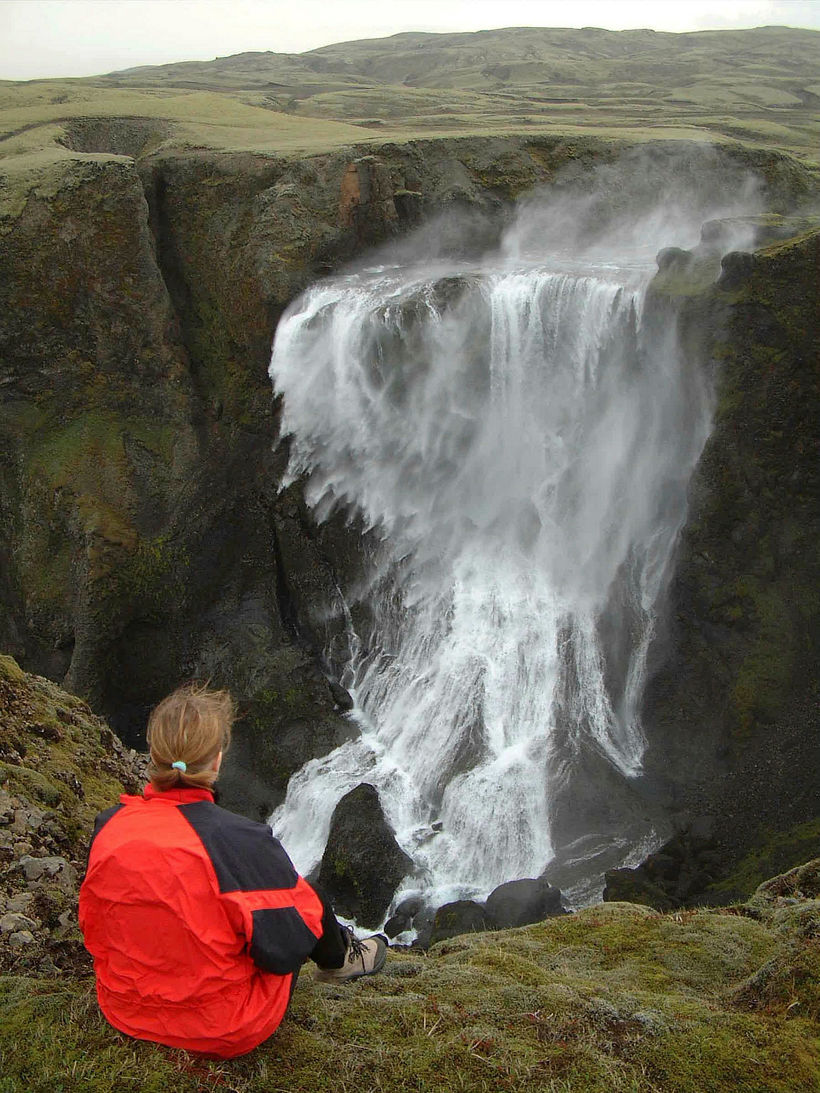10th century Eldgjá eruption thought to have influenced Christianisation of Iceland
New research sugggests that an eruption in Eldgjá had an influence on the change to religion in Iceland in the tenth century finds a team of scientists at Cambridge University. Iceland converted from paganism to Christianity around the year 1000.
A team of scientists and medieval historians, led by the University of Cambridge, has used information contained within ice cores and tree rings to accurately date a massive volcanic eruption, which took place soon after the island was first settled.
Having dated the eruption, the researchers found that Iceland's most celebrated medieval poem, which describes the end of the pagan gods and the coming of a new, singular god, describes the eruption and uses memories of it to stimulate the Christianisation of Iceland. The results are reported in the journal Climatic Change.
The Cambridge-led team pinpointed the date of the eruption using ice core records from Greenland that preserve the volcanic fallout from Eldgjá. Using the clues contained within the ice cores, the researchers found that the eruption began around the spring of 939, some sixty years after the settlement of Iceland, and continued at least through the autumn of 940.
The effects of this eruption were enormous with ash falling all across Europe. Irish, German and Italian sources speak of a blood-red sun during this period. It also led to one of the coldest summer in the last 1500 years.
"The effects of the Eldgjá eruption must have been devastating for the young colony on Iceland - very likely, land was abandoned and famine severe," said co-author Professor Andy Orchard from the University of Oxford's Faculty of English. "However, there are no surviving texts from Iceland itself during this time that provide us with direct accounts of the eruption."
But Iceland's most celebrated medieval poem, Voluspá ('The prophecy of the seeress') does appear to give an impression of what the eruption was like. The poem, which can be dated as far back as 961, foretells the end of Iceland's pagan gods and the coming of a new, singular god: in other words, the conversion of Iceland to Christianity, which was formalised around the turn of the eleventh century.
Part of the poem describes a terrible eruption with fiery explosions lighting up the sky, and the Sun obscured by thick clouds of ash and steam:
"The sun starts to turn black, land sinks into sea; the bright stars scatter from the sky. Steam spurts up with what nourishes life, flame flies high against heaven itself."
The poem's apocalyptic imagery marks the fiery end to the world of the old gods. The researchers suggest that these lines in the poem may have been intended to rekindle harrowing memories of the eruption to stimulate the massive religious and cultural shift taking place in Iceland in the last decades of the tenth century.
Read more at: https://phys.org/news/2018-03-volcanic-eruption-iceland-conversion-christianity.html#jCp



/frimg/1/57/94/1579405.jpg)
/frimg/1/57/87/1578747.jpg)



